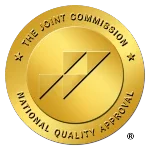The Many Ripple Effects of Meth Addiction
Crystal meth use is a serious problem that affects not only the user but those around them as well. From physical health issues and relationship problems to financial difficulties and legal troubles, people who are addicted to meth find themselves in a downward spiral that can be difficult to pull out of.
Meth is a problem that can affect anyone at any time and has spread widely across the US. According to the National Institute on Drug Abuse (NIDA) overdose deaths involving meth use have risen sharply in the past decade.
Fortunately, there is help available for those struggling with meth addiction. Read on to learn more about addiction to meth, meth side effects, and how to get effective treatment from Catalina Behavioral Health!
What Is Methamphetamine?
Methamphetamine, also known as “meth” or “crystal meth,” is a powerful stimulant that is illegally produced from various chemicals. It comes in the form of a white crystal powder, which can be injected, smoked, snorted, or swallowed.
Methamphetamines increase levels of dopamine—a neurotransmitter associated with pleasure and reward—in the brain. This creates a feeling of alertness and euphoria for users but research suggests that it also changes the brain structure and the way their brain functions over time.
What are the Causes and Risk Factors For Meth Abuse?
There are several factors that can contribute to methamphetamine abuse. Some people may be predisposed to substance abuse due to biological or genetic factors. Additionally, environmental factors such as a family history of drug use or exposure to drug abuse in one’s environment can play a role in one’s likelihood of abusing crystal meth. Finally, mental health struggles such as depression or anxiety can lead some people to turn to drugs for relief from their symptoms.
Additionally, people who are more likely to develop methamphetamine addiction include those who have limited access to healthcare or other resources that could help them manage their methamphetamine misuse.
Those who suffer from low self-esteem or feelings of worthlessness may also be more likely to turn to meth as a way of escaping their emotions. Furthermore, individuals who have experienced trauma or difficult life events are at an increased risk for drug abuse due to their need for coping mechanisms.
Finally, those who lack strong support systems may be more likely to develop an addiction since they don’t have anyone available who could help them manage their use if they start to struggle.
What are the Physical Effects of Methamphetamine Use?

Crystal meth is an incredibly potent central nervous system stimulant drug that can cause an intense rush of pleasure and energy when ingested. However, these feelings wear off quickly, leaving users feeling depressed and even paranoid in some cases. This can result in users taking more and more doses of the drug as they look for that initial rush they experienced with their first hit.
Over time, this cycle can lead to a number of physical health issues, such as
- Weight loss
- Dental problems due to “meth mouth” (decaying teeth from meth use)
- Insomnia
- Weakened immune system
- Rapid heart rate, elevated blood pressure, and elevated body temperature
- Hair loss due to stress and meth abuse
- Irregular heartbeat
- Skin sores from picking at one’s face or body due to hallucinations or delusions caused by the drug
- Brain damage from prolonged use
- Liver damage due to toxic chemicals used in production processes in homemade meth labs
- Decreased function of motor skills
- Violence/Violent behavior
- Death from overdose or suicide
The Social Effects of Meth Addiction
Drug abuse also has far-reaching social effects on both its users and their loved ones. People who are addicted may become increasingly isolated from friends and family members as they become consumed by their meth use.
They may also begin engaging in risky behaviors such as unprotected sex which can result in unwanted pregnancies or sexually transmitted diseases (STDs). Due to its highly addictive nature, methamphetamine users who become addicted will do whatever it takes to obtain more meth.
This could mean stealing money or items from family members or committing other crimes in order to get money for drugs, despite the negative consequences.
These activities often lead to strained relationships with family members or even criminal charges which further complicate matters for the addict looking for help.
Chronic Methamphetamine Use Leads to Mental Health Issues
Methamphetamine use can lead to numerous mental health issues, such as:
- Psychotic symptoms and psychotic features – like auditory hallucinations, delusions, and paranoia
- Intense cravings
- Mood disturbances
- Anxiety
- Depression
- Stress
Long-term effects of abuse of methamphetamine can cause permanent damage to the brain resulting in impaired thinking processes and memory loss that are difficult to reverse even after quitting the drug.
In addition, chronic methamphetamine abuse can disrupt normal hormone production leading to changes in mood that could increase the risk of developing psychiatric disorders such as depression or anxiety disorders.
Methamphetamine use can not only cause mental health problems but can also exacerbate existing ones. The drug increases levels of dopamine in the brain which leads to an intense feeling of euphoria followed by a “crash” during which users might experience depression or fatigue.
Furthermore, people with a history of mental illnesses may be more vulnerable to developing substance abuse to crystal meth or other drugs due to the altered brain chemistry caused by their condition. Therefore, they should avoid using drugs like methamphetamine altogether if possible since it could worsen their symptoms significantly over time.
Side Effects of Crystal Meth: Crystal Meth Withdrawal Symptoms

While the severity of withdrawal symptoms varies from person to person, there are some commonalities in terms of what one can expect during crystal meth withdrawal. The most commonly reported physical symptoms are fatigue, insomnia or excessive sleeping, headaches, loss of appetite and weight loss, increased heart rate, increased blood pressure, sweating, increased body temperature, and tremors.
In addition to physical symptoms associated with methamphetamine withdrawal, there are also psychological symptoms such as depression and anxiety, cravings, mood swings, psychotic symptoms, and cognitive difficulties including poor concentration and focus, irritability, and suicidal thoughts or ideation.
The Withdrawal Process
The amount of time it will take for someone to go through the withdrawal process varies depending on several factors such as how long they have been using methamphetamines and how heavily they have been using them. Generally speaking though, crystal meth withdrawals typically last anywhere from 5-14 days but can sometimes last up to several months in some cases due to the “post-acute withdrawal syndrome” (PAWS).
During this period of time, it is important for people who are trying to get sober to stay focused on sobriety-related goals such as attending 12-step meetings or therapy sessions or engaging in other healthy activities like exercise or meditation. This can help reduce cravings while also providing a sense of structure and accountability which is essential when it comes to avoiding relapse.
The Different Types of Crystal Meth Addiction Treatment
There are many different types of meth addiction treatment, and the right one for you will depend on your individual situation. It’s important to remember that addiction is a disease, and like any other disease, there is no one-size-fits-all cure. That said, you can receive treatment that can help you overcome your addiction and get your life back on track.
Detoxification
When it comes to treating meth addiction, the most important first step is detoxification. During detoxification, you stop using the drug and let it all clear from your body. This process can be uncomfortable and may include nausea, tremors, chills, sweating, headaches, and other withdrawal symptoms. However, medically supervised detox can help manage these symptoms while providing a safe environment for recovery.
Inpatient Treatment For Methamphetamine Abuse
Following detox from meth, inpatient programs can be incredibly beneficial for individuals who are struggling with meth addiction. Inpatient treatment programs provide 24-hour care and monitoring in a residential setting where individuals receive medical attention around the clock if needed.
Inpatient treatment centers typically offer individual counseling sessions as well as group therapy sessions which focus on relapse prevention strategies and helping individuals recognize triggers for this stimulant substance. Additionally, these facilities often provide holistic therapies such as yoga classes or art therapy which focuses on an individual’s mental well-being and can help them cope with their emotions in healthy ways without turning to crystal meth.
Outpatient Treatment For Meth Abuse

Outpatient programs and intensive outpatient programs or IOPs are other options for those dealing with methamphetamine addiction. Outpatient programs allow individuals to receive intensive therapy during the day while still allowing them to maintain their daily responsibilities such as work or school obligations outside of treatment hours.
This type of program may be recommended by a doctor if they feel that an individual is not in need of the 24-hour care that an inpatient program offers but would still benefit from more intensive therapeutic services than what would typically be provided through weekly individual therapy sessions alone. The duration of outpatient treatment varies depending on each individual’s needs but generally lasts between 3-6 months on average.
Therapy
Therapy is an important part of treatment for crystal meth addiction. It can help the person understand why they turned to meth in the first place and learn how to cope with triggers and stressors in their life without using drugs. There are many different types of therapy, such as cognitive behavioral therapy, which can be very effective in treating crystal meth addiction.
12 Step Programs
There are also 12-step programs available, such as Narcotics Anonymous, which can be very helpful for people in recovery from meth addiction. These programs provide support and fellowship with other people who are going through similar experiences. They can be a great way to stay sober after completing treatment.
Find Help with Crystal Meth Use and Get Treatment Options
No one should have to face crystal meth abuse alone; if you or someone you know is struggling with crystal meth use or any other form of substance abuse disorder, please contact Catalina Behavioral Health today for more information about our treatment options. We are here for you 24/7.
Our team will provide you with compassionate care and empower you with the knowledge necessary for lasting sobriety at every step of your journey toward recovery.
Together we will make sure that no matter what life throws your way you will be able to handle it without resorting to a dangerous drug, like crystal meth use.
If you or a loved one needs help understanding meth addiction, learn more by calling Catalina Behavioral Health today!





